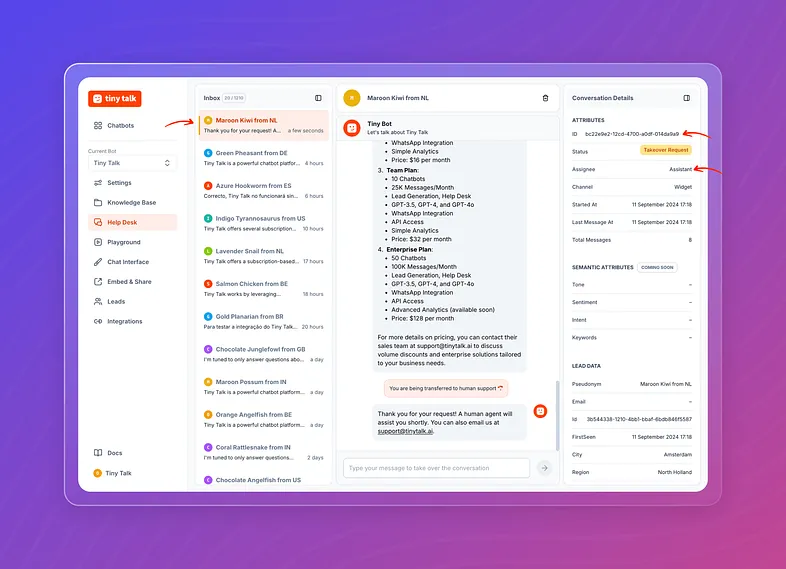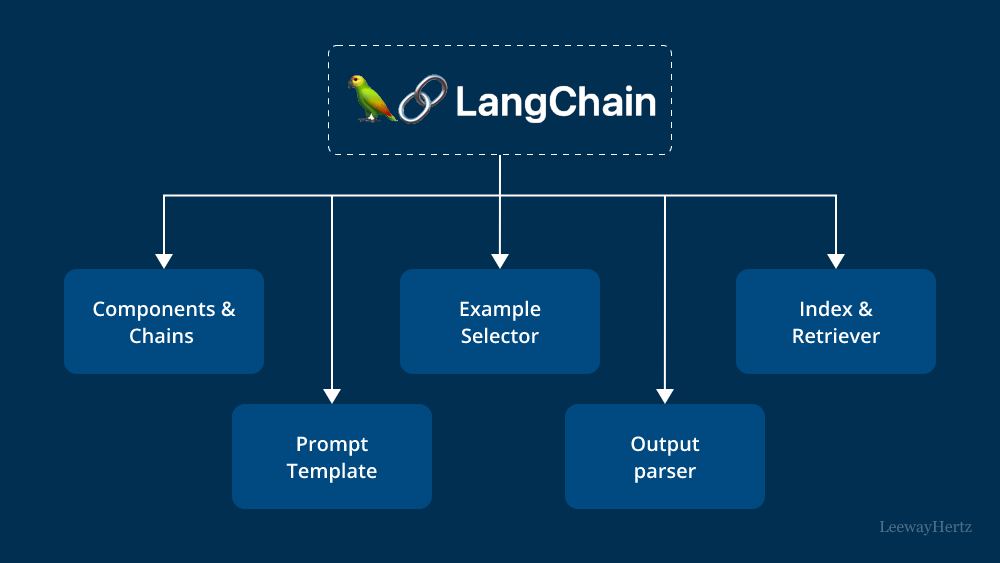In an era where artificial intelligence (AI) is reshaping how we interact with technology, Langchain has emerged as a prominent framework enabling developers to create applications driven by sophisticated language models. Among its many features, the “human takeover” capability stands out as a vital mechanism that not only enhances user experience but also reflects the evolving relationship between humans and machines. This article explores the nuances of the Langchain human takeover, its implications for the future of AI, and how it may influence societal structures.
What is Langchain?
Definition and Purpose
Langchain is a framework designed to simplify the process of building applications that harness the power of large language models (LLMs). Its primary goal is to facilitate the integration of language processing capabilities into various applications, making it easier for developers to create more interactive and intelligent systems.
Core Features of Langchain
- Modular Architecture: Langchain’s design allows developers to customize and extend its capabilities, catering to various applications—from chatbots to complex data analysis tools.
- Integration with APIs: The framework provides seamless connections to external APIs, enabling real-time data fetching and interaction with various services.
- Human Takeover Mechanism: This crucial feature empowers chatbots to hand over control to human agents when necessary, ensuring a higher level of service.
Understanding Human Takeover
What is Human Takeover?
Human takeover is the process that allows an AI chatbot or system to transfer the conversation control to a human agent when it encounters a query or situation it cannot adequately address. This mechanism is essential in scenarios that require emotional intelligence, complex reasoning, or nuanced human judgment.
Importance of Human Takeover in AI Interactions
Enhancing User Satisfaction
When users interact with AI systems, they expect quick and effective responses. However, not every query can be resolved through automated responses. The ability to transition to a human agent ensures that users receive the assistance they need, leading to higher satisfaction and loyalty.
Building Trust in AI Systems
Incorporating a human takeover feature fosters trust in AI systems. Users appreciate knowing they can escalate their issues to a human if the AI cannot resolve them. This transparency builds confidence in the technology and encourages users to engage more deeply.
Maintaining Quality of Service
In customer service, the quality of interactions is paramount. Human agents bring empathy and understanding to complex situations, which AI may lack. By implementing human takeover, companies can maintain high service standards while leveraging the efficiency of AI.

The Mechanism of Human Takeover Langchain
How Does It Work?
The human takeover process in Langchain involves several steps:
- User Query Analysis: When a user submits a query, the AI analyzes it to determine if it can provide a satisfactory response based on its training and capabilities.
- Threshold Settings: Developers can define specific thresholds or conditions that prompt the AI to initiate a human takeover. For instance, if the query involves sensitive topics or complex scenarios, the AI can be programmed to escalate immediately.
- Seamless Transition: If the AI determines it cannot assist adequately, it triggers a transition to a human agent. This can be executed through a well-defined interface that informs the user of the handover, ensuring a smooth user experience.
Tools and Technologies
To implement human takeover effectively, developers often use a combination of the following tools:
- Webhook Integrations: Webhooks facilitate real-time communication between the AI system and human agents, allowing for instant handover.
- User Interface Design: Creating intuitive user interfaces that clearly indicate when a human is taking over is crucial for user understanding and satisfaction.
- Logging and Analytics Tools: These tools help track user interactions, providing insights into common points of failure for the AI, which can inform further training and improvement.
Implications for the Future of AI
Enhancing Human-AI Collaboration
The introduction of human takeover features represents a significant shift toward collaborative systems where humans and AI work together rather than in competition. By allowing AI to handle routine tasks while humans manage complex issues, we can enhance overall productivity and satisfaction.
Ethical Considerations
As with any technological advancement, ethical considerations must be taken into account:
- Transparency and Disclosure: Users should be clearly informed when they are interacting with AI versus a human. This transparency helps maintain trust and ensures users understand the nature of their interactions.
- Data Privacy and Security: Ensuring that user data is protected during transitions is paramount. Companies must implement robust security measures to safeguard personal information.
Economic Impact
The advent of AI systems capable of human takeover may lead to shifts in the job market. While automation may reduce the need for certain roles, it could also create new opportunities in areas that require human oversight, emotional intelligence, and complex problem-solving abilities.
Societal Implications
Redefining Customer Service
The integration of human takeover capabilities in chatbots has the potential to redefine customer service paradigms. With AI handling initial inquiries and human agents stepping in as needed, businesses can achieve a balance of efficiency and personalization that enhances customer satisfaction.
Building Trust in Technology
As users experience smoother interactions with AI systems that can effectively transition to human agents, their overall trust in technology may increase. This trust could lead to greater adoption of AI technologies across various sectors, from healthcare to education.
Educational Opportunities
The ability to implement human takeover features can also transform educational tools. For instance, in online learning platforms, students can receive immediate assistance from human tutors when automated systems are unable to address their questions, enhancing the learning experience.
Practical Applications of Human Takeover in Langchain
Customer Support Systems
Businesses across industries are increasingly leveraging Langchain’s human takeover feature in their customer support systems. This ensures that when chatbots encounter complex queries, users are seamlessly connected to human agents who can provide tailored assistance.
Healthcare Applications
In healthcare, where the stakes are high, the human takeover feature is particularly valuable. Patients seeking medical advice or assistance can receive empathetic support from human professionals when AI systems struggle with sensitive or intricate queries.
E-commerce Solutions
E-commerce platforms can benefit immensely from human takeover capabilities. By allowing chatbots to handle routine inquiries while enabling human agents to address complex concerns, these platforms can enhance customer experiences and drive sales.
Challenges and Limitations
Technical Limitations
Implementing human takeover effectively requires a robust infrastructure capable of supporting real-time communication. Ensuring that systems can handle multiple transitions without lag or errors is a critical technical challenge.
User Experience Design
Crafting user interfaces that clearly indicate when a human takeover is occurring is essential for user understanding. If not designed well, users may become confused or frustrated during the transition.
Balancing Automation and Human Interaction
Finding the right balance between automated assistance and human intervention is crucial. While AI can handle many tasks efficiently, certain situations still require the nuanced understanding that only humans can provide.
The Future of Langchain Human Takeover
Ongoing Developments
As AI technologies continue to evolve, we can expect further enhancements in langchain human takeover capabilities. Future iterations may include more sophisticated human takeover protocols, allowing for even smoother transitions and better user experiences.
Broader Adoption Across Industries
The principles underlying human takeover are likely to be adopted beyond customer service and healthcare. Sectors such as finance, legal services, and education may also benefit from this approach, leading to more effective and personalized interactions.
Conclusion
The Langchain human takeover feature represents a pivotal advancement in how we integrate AI into our daily lives. By allowing seamless transitions from AI to human agents, we can enhance user satisfaction, build trust, and redefine the potential of AI applications. As we continue to explore the implications of this technology, we must remain mindful of the ethical, economic, and societal considerations that accompany these advancements.
FAQs About langchain human takeover
What is the primary purpose of human takeover in Langchain?
The primary purpose is to enhance user experience by allowing a human agent to take over when the AI cannot satisfactorily resolve a query.
How does Langchain ensure a seamless transition during human takeover?
Langchain uses specific configurations that allow for real-time communication and a smooth transition from AI to a human agent.
What industries can benefit from the human takeover feature?
Industries such as customer service, healthcare, e-commerce, finance, and education can greatly benefit from this feature.
What are the ethical considerations regarding human takeover in AI?
Transparency about AI interactions and data privacy are significant ethical concerns that must be addressed.
Will human takeover replace human jobs in the long term?
While it may shift the nature of certain jobs, human takeover features could create new opportunities that require complex problem-solving and emotional intelligence.





